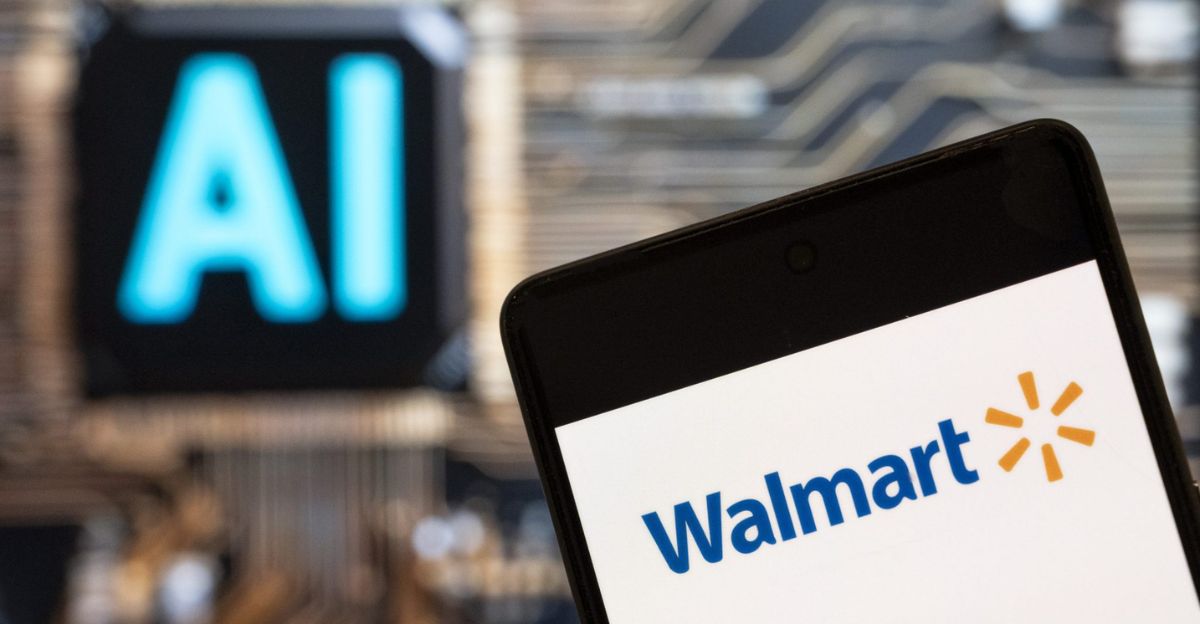
Walmart, the world’s largest private employer, is launching an unprecedented workforce transformation centered on artificial intelligence. With 2.1 million employees and 270 million weekly customers, the initiative promises to reshape not only Walmart’s operations but the broader retail landscape.
CEO Doug McMillon emphasizes that “every job at Walmart—whether in the office, on the sales floor, or in the warehouse—will change as AI becomes central to daily work.” The move reflects a bold strategy: integrating AI to redefine work without cutting jobs.
Here’s what’s happening as Walmart navigates this historic shift.
White-Collar Jobs Lead the Way

The first wave of change targets corporate and office-based employees. Analysts, managers, and other knowledge workers are seeing AI tools take over routine decision-making and data processing. Walmart is rolling out chatbots, advanced supply chain tracking, and AI-powered customer service tools designed specifically for these roles. Unlike traditional automation, which focuses on repetitive tasks, this effort reshapes workflows and responsibilities across the organization.
For frontline staff, including cashiers and warehouse workers, the timeline is more gradual. AI will support tasks such as inventory management, scheduling, and checkout. Walmart’s leadership stresses that the goal is not to reduce staff but to equip employees with the tools needed to adapt. Workers will be required to learn new skills, ensuring that human expertise complements AI capabilities as the technology matures.
AI Touches Customers and Suppliers

Walmart customers are already experiencing AI in their shopping journeys. In October 2025, the company partnered with OpenAI to integrate ChatGPT-powered tools, allowing shoppers to plan meals, restock essentials, and complete purchases through conversational AI. Company executives report that customers using these tools spend 25% more on average, signaling a shift in purchasing behavior.
Suppliers are also part of the AI ecosystem. Walmart now provides partners with real-time insights into customer demographics and trends, improving forecasting and inventory management.
In one case, AI and generative tools reduced fashion production timelines by 18 weeks, accelerating the path from trend identification to product availability. This level of predictive power is prompting suppliers to optimize operations and respond faster to market demand.
Competitive Ripples Across Retail
Walmart’s AI adoption is increasing competitive pressure throughout the retail sector. Analysts suggest its technological edge could intensify the “Walmart Effect,” challenging smaller retailers and potentially impacting wages. While competitors like Amazon and Target have cut corporate roles, Walmart is pursuing transformation over reduction, aiming to maintain its workforce while fundamentally changing how work gets done.
The strategy carries risks. Walmart plans to freeze its headcount at 2.1 million through 2028, relying on AI-driven productivity to fuel growth. Early results show measurable improvements: AI scheduling tools reduced shift planning from 90 minutes to 30, while customer support resolution times fell by up to 40%.
Warehouse operations have become more efficient, though gains vary by location. Challenges remain, such as “workslop”—AI-generated output requiring human correction—underscoring the need for careful oversight.
Training and Reskilling for the Future

To prepare employees for this shift, Walmart is investing heavily in training. Its Walmart Academy will deliver over 5.5 million hours of instruction, while AI skills certifications through its partnership with OpenAI help associates navigate new technology. Employees are moving into roles like certified technicians, bot supervisors, and human-AI collaboration specialists.
This approach pairs technology deployment with human growth, aiming to safeguard jobs through evolution rather than elimination. The AI rollout is organized around four “super agents” serving customers, associates, suppliers, and developers. New markets, such as South Africa, will launch with AI built into operations from day one, demonstrating Walmart’s commitment to integrating technology across its global footprint.
Stakes for Retail and Beyond

Walmart’s AI-driven transformation is already driving digital revenue growth. By fiscal 2025, estimates suggest its e-commerce business reached $122.6 billion, propelled by AI-enhanced shopping experiences and operational efficiencies. Stock responded positively to the OpenAI partnership, rising nearly 5% to record highs.
Beyond revenue, the focus is on operational improvements, including labor allocation, waste reduction, and personalized customer experiences. As the largest private employer in the U.S., Walmart’s approach could set a benchmark for the retail sector and millions of workers facing technological shifts. The next three years will test whether AI can deliver growth without job loss, and whether Walmart’s model of transformation is sustainable for the industry as a whole.


